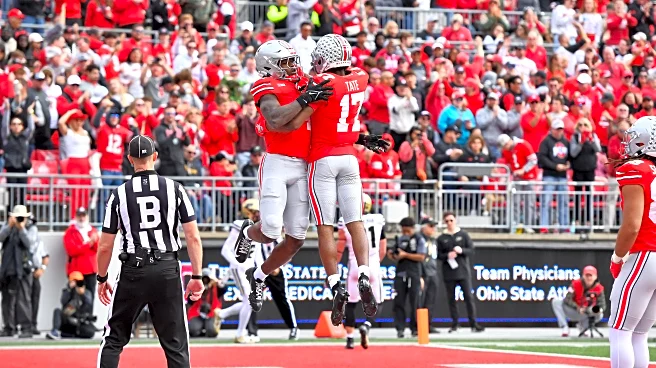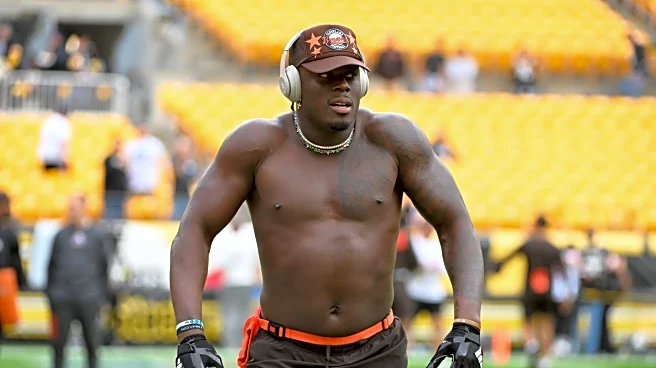What's Happening?
Carnell Tate, a wide receiver from Ohio State, is generating significant attention as a potential first-round pick in the NFL draft. During ESPN's First mini mock midseason draft, Tate was projected to
be selected by the New York Giants at No. 5 overall. Analysts, including Field Yates, praised Tate's route running, strength, and hands, suggesting he is ready to make an immediate impact in the NFL. Tate's performance has been particularly notable given his collaboration with fellow Ohio State player Jeremiah Smith, who is not yet eligible for the draft. Mel Kiper Jr. highlighted that Smith's presence has allowed Tate to excel, potentially making him the top wide receiver prospect.
Why It's Important?
Carnell Tate's emergence as a top NFL draft prospect underscores Ohio State's reputation as a powerhouse for producing elite wide receivers. The attention on Tate reflects the broader trend of NFL teams valuing polished, pro-ready players from successful college programs. If Tate is selected early in the draft, it could further solidify Ohio State's status as 'wide receiver U,' following in the footsteps of recent successful alumni like Marvin Harrison Jr., Chris Olave, and Garrett Wilson. This development is significant for NFL teams seeking to bolster their offensive capabilities with proven talent.
What's Next?
As the NFL draft approaches, scouts and teams will continue to evaluate Carnell Tate's performance and potential fit within their rosters. The buzz surrounding Tate may lead to increased scrutiny and analysis of his gameplay, potentially influencing his draft position. Ohio State's continued success in developing top-tier wide receivers may also impact recruiting efforts and the program's standing in college football. NFL teams, particularly those in need of offensive upgrades, will likely monitor Tate's progress closely.
Beyond the Headlines
The rise of Carnell Tate as a draft prospect highlights the importance of college football programs in shaping future NFL stars. Ohio State's ability to consistently produce high-caliber players may influence other programs to adopt similar training and development strategies. Additionally, Tate's success could inspire young athletes to pursue opportunities at schools known for their strong football programs, potentially shifting recruitment dynamics.












